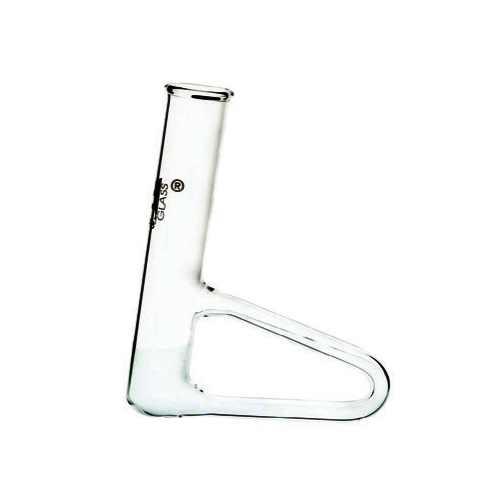Melting Point Of Glass

The concept of a melting point for glass can be somewhat misleading, as glass does not have a distinct melting point like metals do. Instead, glass undergoes a process called glass transition, where it gradually softens and becomes more fluid as it is heated. This process occurs over a range of temperatures, rather than at a single, well-defined point.
To understand why glass behaves this way, it’s helpful to consider its molecular structure. Glass is an amorphous solid, meaning that its molecules are not arranged in a regular, crystalline pattern. Instead, the molecules in glass are disordered and randomly arranged, which gives glass its unique properties. When glass is heated, the molecules begin to vibrate more rapidly and gain energy, causing the glass to soften and become more fluid.
The temperature range over which glass undergoes this transition is typically between 500°C and 1000°C (932°F to 1832°F), although the exact temperatures can vary depending on the specific type of glass. For example, soda-lime glass, which is the most common type of glass used in windows and bottles, has a glass transition temperature of around 550°C (1022°F). Borosilicate glass, on the other hand, which is used in laboratory equipment and cookware, has a glass transition temperature of around 820°C (1508°F).
It’s worth noting that while glass does not have a distinct melting point, it can still be melted and formed into different shapes. However, this process requires careful control over the temperature and cooling rate, as glass can become distorted or develop stresses if it is cooled too quickly.
Glass Transition Temperature
The glass transition temperature, often denoted as Tg, is the temperature at which the glass transition occurs. It is the point at which the glassy state begins to change into a more fluid, rubbery state. This temperature is not a fixed point but rather a range over which the glass’s properties change from those of a solid to those of a viscous liquid.
Factors Affecting Glass Transition Temperature
Several factors can influence the glass transition temperature of glass, including:
- Composition: The chemical makeup of the glass can significantly affect its Tg. For instance, the addition of certain oxides can lower or raise the glass transition temperature.
- Cooling Rate: The rate at which glass is cooled from its molten state can impact its structure and, consequently, its Tg.
- Thermal History: Previous thermal treatments can alter the glass’s structure, affecting its glass transition behavior.
- Pressure: External pressure can also influence the glass transition temperature, although this effect is typically more relevant at extremely high pressures.
Practical Applications
Understanding the glass transition temperature is crucial for various industrial and manufacturing processes. For example:
- Glass Forming: In the production of glass objects, controlling the temperature and cooling rate is essential to achieve the desired shape and properties without inducing stresses or defects.
- Thermal Tempering: The glass transition temperature plays a role in thermal tempering processes, where glass is heated and then rapidly cooled to increase its strength and durability.
- Glass Recycling: Knowledge of the glass transition temperature can help optimize glass recycling processes by ensuring that the glass is heated to the appropriate temperature for melting and reforming.
Conclusion
In conclusion, while glass does not have a melting point in the classical sense, its glass transition temperature is a critical parameter that defines its thermal behavior. Understanding this property is essential for the manufacture, treatment, and application of glass in various fields. The complex relationship between the glass transition temperature, composition, and thermal history underscores the need for careful consideration in the production and use of glass materials.
Frequently Asked Questions
What is the typical melting point of glass?
+Glass does not have a distinct melting point. Instead, it undergoes a glass transition over a range of temperatures, typically between 500°C and 1000°C (932°F to 1832°F), where it gradually softens and becomes more fluid.
How does the composition of glass affect its melting point?
+The composition of glass, including the types and amounts of oxides present, can significantly affect its glass transition temperature. Certain additives can either lower or raise the temperature at which the glass becomes soft and pliable.
What is the difference between glass transition and melting point?
+The melting point is a specific temperature at which a solid becomes a liquid. Glass transition, on the other hand, is a range of temperatures over which glass changes from a hard, glassy state to a softer, more fluid state, without undergoing a distinct phase change like melting.
Advanced Topics
For those interested in a deeper exploration of glass properties and their applications, several advanced topics warrant consideration:
- Nanotechnology and Glass: The integration of nanomaterials into glass can significantly alter its thermal, optical, and mechanical properties, offering new possibilities for applications ranging from energy efficiency to biomedical devices.
- Smart Glass Technologies: Advances in materials science have led to the development of smart glass, which can change its light transmission properties in response to electrical signals, temperature, or light, finding applications in architectural windows, displays, and more.
- Glass in Energy Applications: Glass plays a critical role in various energy-related technologies, including solar panels, fuel cells, and thermal energy storage systems, due to its transparency, durability, and ability to withstand extreme temperatures.
These areas highlight the versatility and importance of glass in modern technology and daily life, underscoring the need for continued research and innovation in glass science and engineering.


